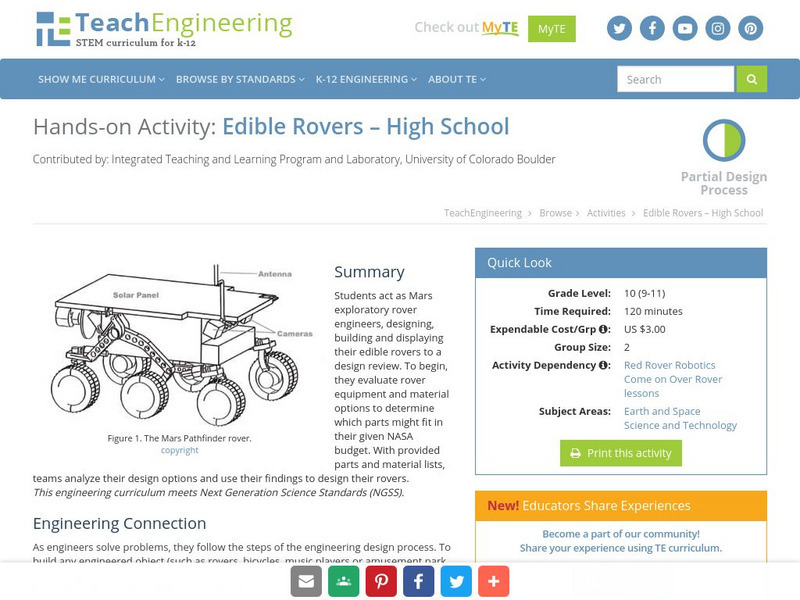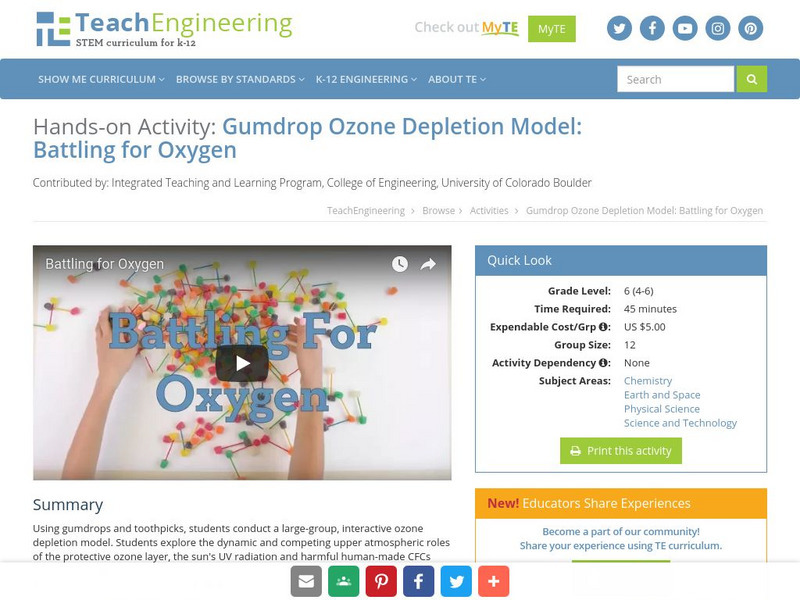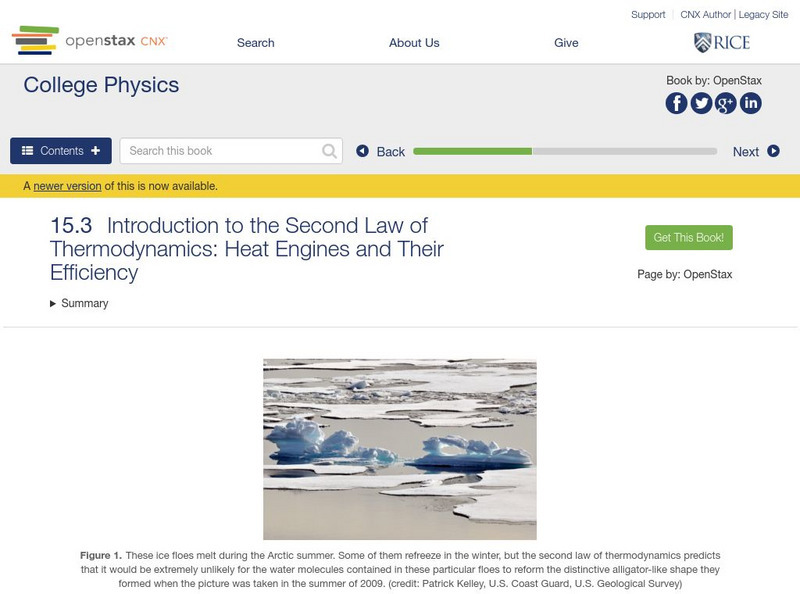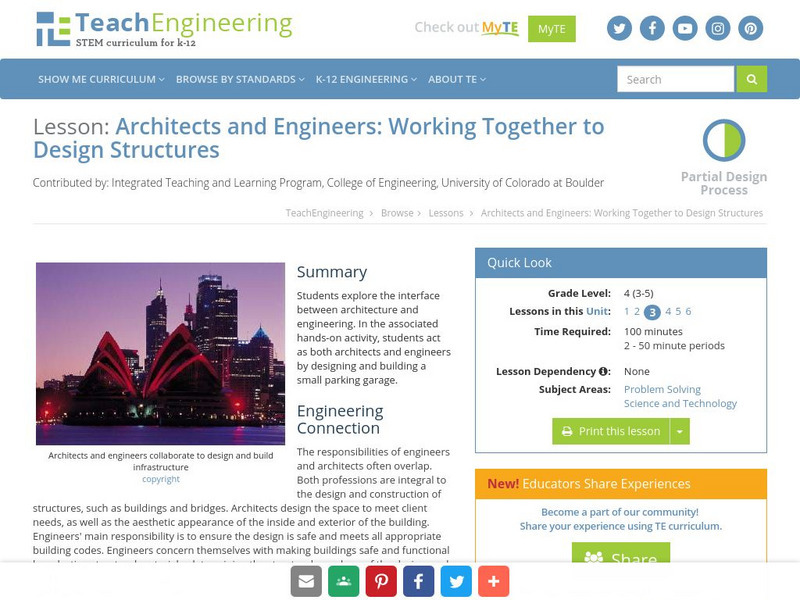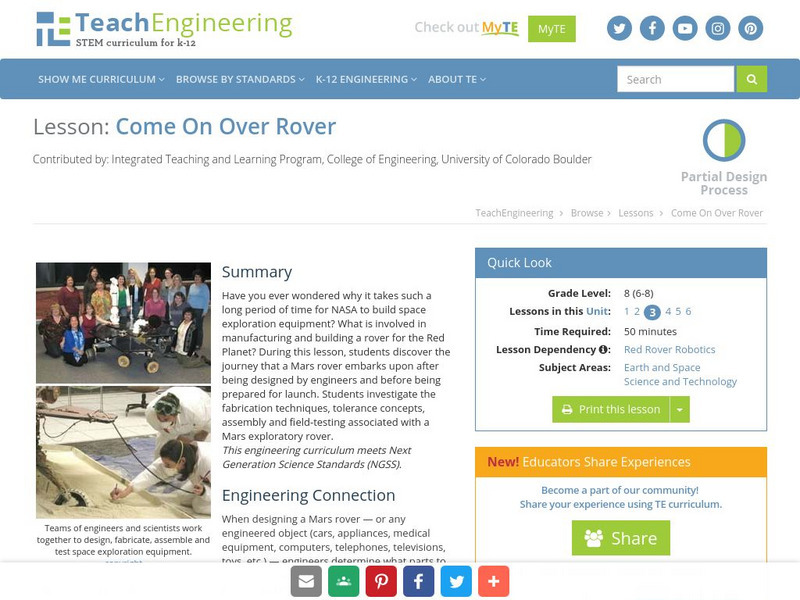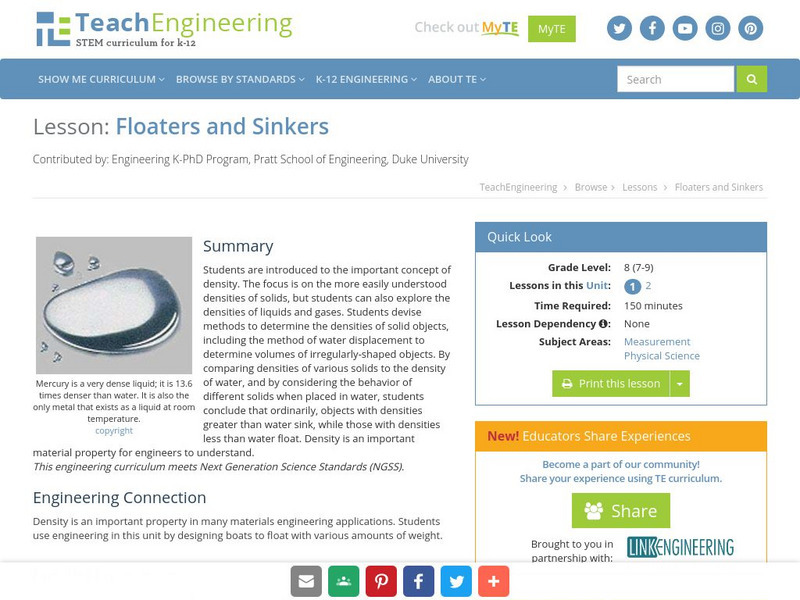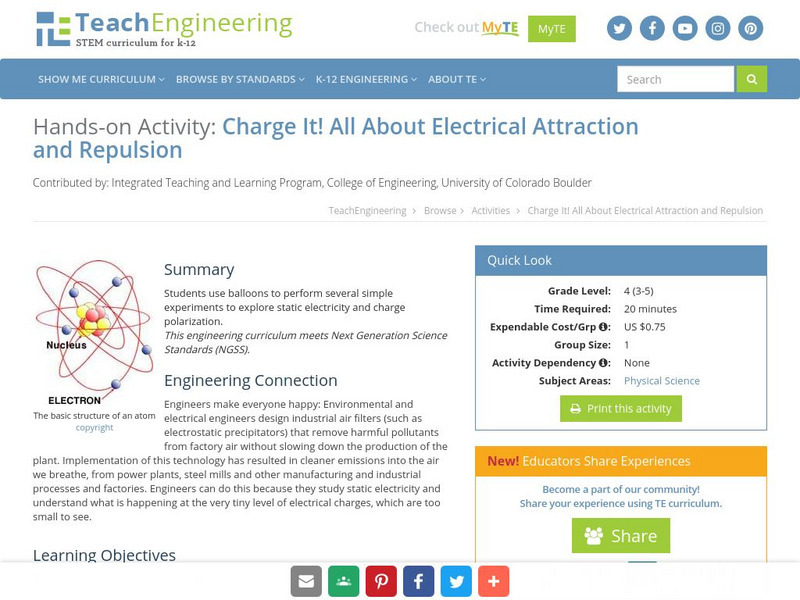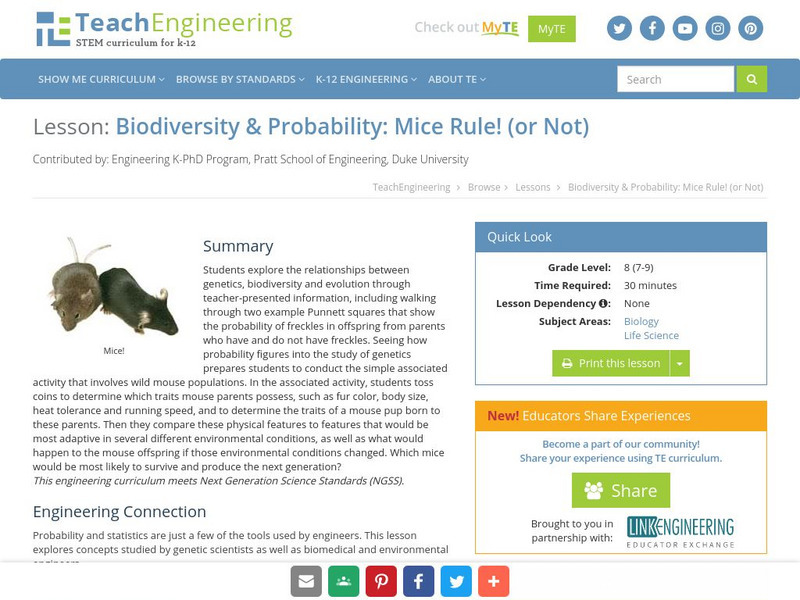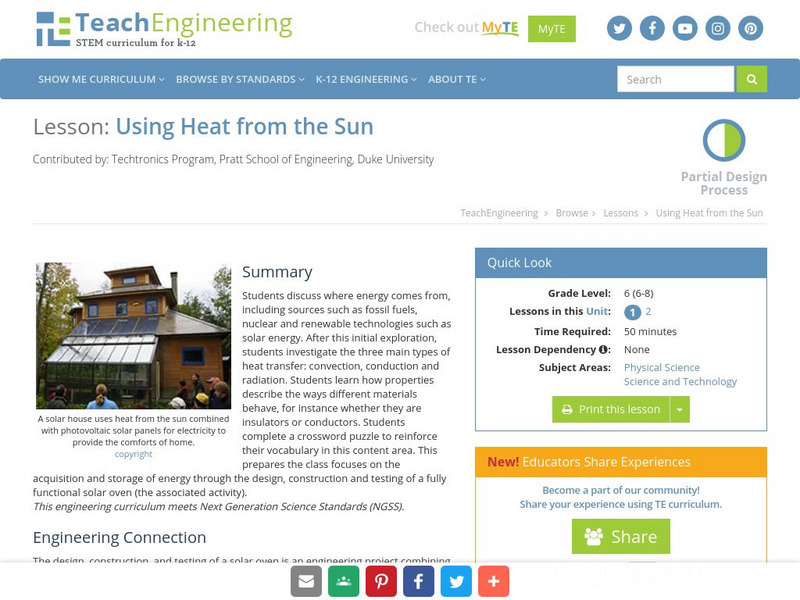National Geographic
National Geographic: Engineering Solutions to Freshwater Problems
Explore how water-based problems in freshwater outlets can be resolved or slowed down with engineering solutions.
TeachEngineering
Teach Engineering: Edible Rovers High School
Students act as Mars exploratory rover engineers, designing, building and displaying their edible rovers to a design review. To begin, they evaluate rover equipment and material options to determine which parts might fit in their given...
TeachEngineering
Teach Engineering: Lunch in Outer Space!
Students learn about the unique challenges astronauts face while eating in outer space. They explore different food choices and food packaging. Students learn about the engineering design process, and then, as NASA engineering teams,...
TeachEngineering
Teach Engineering: Battling for Oxygen
Using gumdrops and toothpicks, students conduct a large-group, interactive ozone depletion model. Students explore the dynamic and competing upper atmospheric roles of the protective ozone layer, the sun's UV radiation and harmful...
TeachEngineering
Teach Engineering: Be "Cool" With Popsicle Engineering
Beginning kindergarteners are introduced to science and engineering concepts through questions such as "What is a Scientist?" and "What is an Engineer?", and go on to compare and contrast the two. They are introduced to five steps of the...
Science Buddies
Science Buddies: Science Careers: Materials Scientist and Engineer
An interest in chemistry and physics is what you need to explore the career of materials scientist or engineer. In this career you manipulate atoms to change the structure of materials to make new products. This Science Buddies site lays...
TryEngineering
Try Engineering: Engineering Air Traffic
Students work in teams to explore how radar and computer technology is used to provide the necessary data to air traffic controllers. Students become "engineers" as they work to find ways to enhance the current air traffic control system.
OpenStax
Open Stax: Second Law of Thermodynamics: Heat Engines and Their Efficiency
In this section of the textbook, learn about the second law of thermodynamics and how it relates to the function of heat engine. Section will also explain how to calculate net work and efficiency of cyclical processes such as a heat...
TeachEngineering
Teach Engineering: Architects and Engineers
Learners explore the interface between architecture and engineering. In the associated hands-on activity, students act as both architects and engineers by designing and building a small parking garage.
TeachEngineering
Teach Engineering: Oil Spill
This lesson will allow students to explore an important role of environmental engineers: cleaning the environment. Students will learn details about the Exxon Valdez oil spill, which was one of the most publicized and studied...
Learn Engineering
Learn Engineering: Understanding Degrees of Freedom
Explores how to predict degrees of freedom of a mechanism. Understand that in mechanics degrees of freedom is one of the most important concepts. Video length: 4 min. 41 sec.
TeachEngineering
Teach Engineering: Come on Over Rover
Have you ever wondered why it takes such a long period of time for NASA to build space exploration equipment? What is involved in manufacturing and building a rover for the Red Planet? During this lesson, students will discover the...
CK-12 Foundation
Ck 12: Heat Engine
[Free Registration/Login may be required to access all resource tools.] Students will learn about heat engines, explore pressure volume diagrams, and figure how to calculate ideal efficiencies of heat engines.
TryEngineering
Try Engineering: Find It With Gps!
Using a GPS handheld device and online resources, students work in teams to explore the technology behind GPS, current GPS applications, and brainstorm new applications for future global use to solve society's issues.
TeachEngineering
Teach Engineering: Floaters and Sinkers
This instructional activity introduces students to the important concept of density. The focus is on the more easily understood densities of solids, but students can also explore the densities of liquids and gases. Students devise...
TeachEngineering
Teach Engineering: Charge It!
Students use a balloon to perform several simple experiments to explore static electricity and charge polarization.
TeachEngineering
Teach Engineering: Mice Rule! (Or Not)
Students explore the relationships between genetics, biodiversity, and evolution through a simple activity involving hypothetical wild mouse populations. First, students toss coins to determine what traits a set of mouse parents...
TeachEngineering
Teach Engineering: Using Heat From the Sun
In this lesson, students will first discuss where energy comes from, including sources such as fossil fuels, nuclear, and such renewable technologies as solar. After this initial exploration, students will investigate the three main...
TeachEngineering
Teach Engineering: Population Growth in Yeasts
This lesson plan is the second of two that explore cellular respiration and population growth in yeasts. In the first lesson plan, students set up a simple way to indirectly observe and quantify the amount of respiration occurring in...
TryEngineering
Try Engineering: Spring Scale Engineering
Students learn about the engineering design process as they design, build, and test a spring scale using everyday items that can measure the weight of an apple. The objective of the lesson is to explore how scales work and to learn about...
Other
American Society for Engineering Education: E Gfi: Activity: Keep a Cube
For this activity, student teams in grades K-6 explore the design process by engineering a way to keep an ice cube from melting for 30 minutes. [6:00]
Other
Ph ds.org: Science, Math, & Engineering Career Resources
Are you interested in exploring science, math, or engineering career paths. Investigate career paths, guides, journals, mentoring, and contact information.
TryEngineering
Try Engineering: Build a Big Wheel
Young scholars learn about the engineering design process as they design, build, test, and evaluate a big wheel or Ferris wheel made with pasta, glue, and teabags. The objective of the lesson is to explore how big wheels have been...
TryEngineering
Try Engineering: Telescoping Periscope
Working in teams of "engineers", students explore how a periscope works and is used. They design, build, and test a working periscope made from everyday materials that has adjustable mirrors and be able to telescope as well.

